This document contains important information for all participants in this Research & Development Proof Of Concept (POC). Please read carefully. It is also a long document with many details and there are likely to be errors so please let us know of these errors by contacting us at details contained HERE or email us at support@x.direct
All images shown below were taken on location in Brookfield Residents during the roll-out in 2019.
Here is a link to the 2018 introductory letter to residents explaining the reason this project is needed:
Brookfield Valley Intro Letter V3
Streets in Brookfield with customers currently connected to the network:
- Savages Road
- Gold Creek Road
History
NBN is touted to be providing a Fixed Wireless (FW) service to Brookfield residents sometime in 2020. Many residents believe this to be an inferior technology to fiber and many are looking for alternative solutions. The NBN FW service will probably provide residents with a service equal to 25 Megabits Per Second (Mbps) download and 5 Mbps upload. XSTRA believes residents should have a better solution as a 2nd choice for their homes. XSTRA intends to design such a service with a potential combined speed exceeding the NBN FW speeds by a factor of 600 or up to 20,000 Mbps. Hang on to your seats! This is FAST.

Click here to read more about the NBN Fixed Wireless service from the Whirlpool Forums. It is also very amusing.
Proof of Concept – Phase 1
XSTRA is embarking on a Research & Development project incorporating a proof-of-concept (trial) to bring two wireless, Point-to-Point, backbone connections into Brookfield area with one wireless link to be located at 520 Gold Creek Rd and the other is yet to be determined. This is a new and novel concept using proposed technologies not yet in use in Australia for the dissemination of Internet and associated network services across a new network topology. This R&D POC will provide a superior technological alternative to Australia’s NBN, particularly in rural and regional Australia. A key component is the idea of a “back-fence-fiber” network that would meet all of the ACMA wiring rules, as well as Federal, State and Local government regulations. The POC component will be spread to a small number of landowners to the west of 520 Gold Creek Road on the northern side of Savages Rd and the southern side of Brookfield Road, who may wish to participate in the trial. Participating landowners will be able to connect to this service for free throughout the trial period and a decision will be made by XSTRA at the end of the trial as to whether the concept has been reliable and met expectations. This will be the precursor to a larger POC (phase 2) to the south-east in the future, should it be required. This document is also “work-in-progress” and is likely to contain edits once the POC is complete, but it does provide a reasonably accurate guide as to how this project is to be carried out if the POC ever makes it to commercial viability. Speeds available during the POC will be set by XSTRA and will change from time to time throughout the trial period. At the end of the trial and if the landowner no longer wishes to use the service then the landowner agrees to allow XSTRA team members or contractors back onto their land within 90 days at a time mutually agreeable, to collect any of XSTRA’s equipment that is of value to XSTRA. Any equipment XSTRA leaves behind or any rectifications works required will be the landowners’ responsibility.
POC (Trial Period) End Date
Friday 8th November 2019
R&D Components
Approximately 50% of this project involves designing new methods for the installation and distribution of standard fiber cables in a semi-rural setting. The novel and challenging part of this project will be designing and testing new delivery methods of cable network design which also comply with the Australian Communication and Media Authorities (ACMA) wiring rules.
Note
The rest of this document has been written as though the POC was successful and customers are able to select speeds and begin paying for a service.
Preliminary Notes
- XSTRA Group Pty Ltd (Australia) provides a range of Information Technology and Communication services to its’ business and residential Customers and operates as a Carrier and Carriage Service Provider (CSP) retailing services from other carriers such as NEXTDC, AAPT, SuperLoop and Telcoinabox (TIAB).
- XSTRA delivers Internet Connectivity products and services under the retail brand: “XNET” globally. In Australia however, and up until 1st July 2020, XNET.Direct is the trading name of services retailed to residential customers and this trading name is held by Voipstra Pty Ltd, a company that acts as a CSP and retails services from other carriers such as AAPT, SuperLoop, TIAB, and XSTRA. After 1st July 2020, Voipstra may release or license the trading name or XSTRA.Direct to XSTRA Group Pty Ltd.
- The purpose of this document is to bring to the attention of Customers, important information that XSTRA believes will provide the Customer with enough information to make an informed decision on whether this XNET product or service is suitable for them during this proof of concept project roll-out.
- A Carrier Agnostic Network – If the project is to continue beyond the POC phases, XSTRA will retail the XNET.Direct service to business and residential customers after 1st July 2020. In addition, XSTRA will co-operate with any other Carrier who wishes to access any part of the network (designated telecommunications network) owned by XSTRA and provide access on commercial terms or as required by law. Eg: Clearstream Broadband is a Carrier based in Brisbane who has already expressed interest in a Wholesale arrangement with XSTRA – see their website here – http://www.clearstream.com.au/ – also see Carrier Licence Conditions (Networks supplying Superfast Carriage Services to Residential Customers) Declaration 2014
- Carriage Service Providers – The network will also be open to Carriage service providers (CSPs) – A CSP is a person that supplies a carriage service to the public using a telecommunications network unit. CSPs can include organizations that resell time on a carrier network for phone calls, provide access to the internet (Internet Service Providers) or provide telephone services over the internet (VoIP service providers). CSPs are not required to obtain a license from ACMA to supply a carriage service to the public. (See: https://www.acma.gov.au/about-carriers-and-carriage-service-providers
____________________________________________________________________
SERVICE NAME: XNET Rural Fiber
INFORMATION ABOUT THIS SERVICE
Sales Shout Out
LIGHTNING FAST INTERNET ACCESS IS NOW AVAILABLE FOR YOUR HOME
IF SPEED MATTERS TO YOU – Sign Up Today
XNET Rural Fiber + NBN – Powered by XSTRA*
IMPROVE YOUR HOME RESALE VALUE BY 7% – (for data and citations on this claim see this link – Increases in House Prices that have FTTP )
GOT NBN AND THINK A TECHNOLOGY UPGRADE IS CHEAP – BE PREPARED FOR $35,000 COSTS – (see this link – NBN FTTN to FTTP Conversion Costs and Whirlpool Forums Mention)


Other Links
- http://www.lse.ac.uk/website-archive/newsAndMedia/news/archives/2014/07/InternetSpeed.aspx
- https://www.fiberbroadband.org/blog/study-shows-home-values-up-3.1-with-access-to-fiber
Sales Service Description
WHAT IS XNET Rural Fiber………
Still, waiting on NBN? If you have NBN but not the speed required?
- XNET Rural Fiber is a high-speed Internet connection delivered to homes and small low-rise residential buildings. It is designed for residential use.
- The service is technically superior to most residential Internet products, including Australia’s NBN and other Fiber-based solutions based on GPON or EPON technologies
- XNET Rural Fiber has been designed with Speed in mind. With the ability to transmit a 100 MegaByte file in less than a second, our Fiber Plus solutions are a fierce rival in the broadband market
- Fiber has many benefits over cable. Since fiber optic cables send more data faster, they’re better suited for long-distance communication, which is why they power much of the internet.
Sales Feature List
- Improve Your Home Resale Value
- Available now (subject to site inspection)
- Fiber-based service
- True Synchronous Speed Services
- Speeds start at 12 / 12 Megabits Per Second
- Australia’s highest speed at 10,000 / 10,000 Megabits Per Second
- Fiber cable delivers the fastest speeds – The NBN is still using the old copper lines to deliver services, XNET uses superior technology
- Maximum Download Speeds – 100x times faster than the NBN
- Maximum Upload Speeds 250x times faster than the NBN
- Zero Contract Terms
- Unlimited Data
- Bundle a Phone plan to save money
Why is Fiber better than Cable?
Cable can’t compare!
Don’t mistake the claims of some companies who say they have an “enhanced fiber optic network”. What they have is a hybrid connection mixing a single fiber line with the aging technology of coaxial cable or copper cable. What’s the difference? Fiber-to-the-Home is a 100% fiber optic connection made directly to your home or business with the ability to carry large quantities of data at enormous distance—much faster.
Fiber technology delivers clear advantages over standard coaxial cable and copper networks:
- Fiber is unquestionably the fastest, most versatile high-speed internet connection
- Virtually unlimited bandwidth—the sky’s the limit
- Get the speed you pay for all the time!
- No internet slowdowns during peak hours
- Crystal clear voice communication with less interference
- Better video experience—see higher quality streaming video on your TV, computer, tablets, and other devices.
Other Technical Information
- Unlimited Data – (Note: Fair Use Policy Applies to deter excessive data consumption which could affect other XNET Customers)
- A Dynamic IP Address
- 1 x IPv4 non-rout-able dynamic private Internet Protocol (IP) address
- OPTIONAL: A publicly rout-able static IPv4 address is available as an option at an additional cost (this is not usually required unless the customer is planning to host publicly accessible servers and services from their home)
- 1 x IPv4 non-rout-able dynamic private Internet Protocol (IP) address
- Shared Bandwidth – meaning this service, like NBN plans and most residential-style services, is an over-contended speed service. All accessible bandwidth (speed) is accessible from a pool of available capacity. Speeds may vary at different times of the day.
- Maximum Contention ratio: 1:20
- This is a “best-effort” service with an Up-time Service Level Target: 99.5%
Physical Characteristics of the Service & Lead-In Construction Costs
- Fiber Back-Bone – This is the main fiber line and is usually attached to the length of the customers back-fence or suspended on poles spaced approx 30m apart.
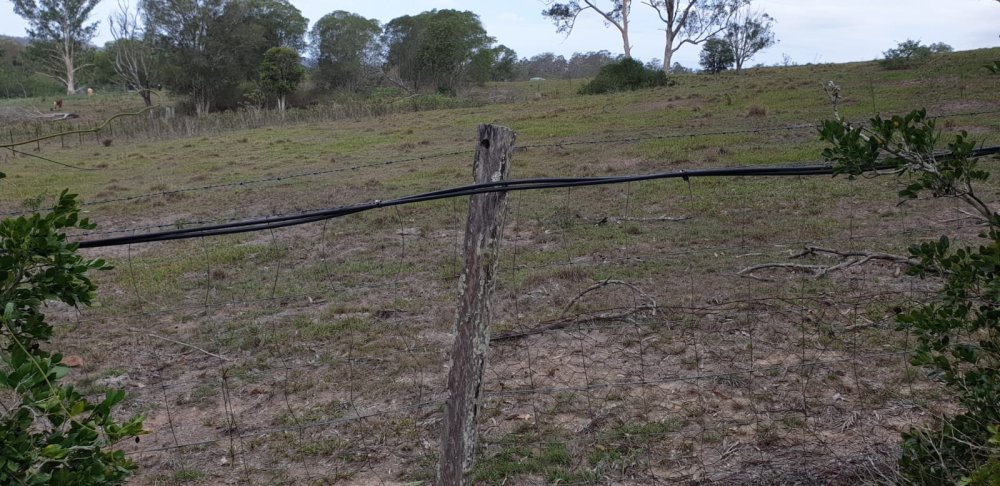 Fiber attached to fence
Fiber attached to fence Fiber suspended on poles
Fiber suspended on poles- The fiber backbone is fed by an upstream fiber back-bone and/or air-fiber connections.
- The fiber cable used complies with AS/CA S008 for UV resistance and water penetration and contains non-metallic central strength members suitable for all installation situations at heights above 2.7m. For heights below 2.7m, (including under-ground), the cable shall be installed in compliant conduit as per Australian Standard AS/CA S009:2013.
- Network Access Point (NAP) – These boxes are located at strategic points along the main backbone of the fiber. There is a one-time connection fee to connect to the NAP per ordered service. The primary physical connection to the Customers property starts at the closest NAP to their property, at a location determined by XSTRA. The NAP is the physical demarcation point separating the Customer and the network.
Network Access Point (NAP)
- Fiber Access Terminal box (FAT) (Optional) – The FAT is a small waterproof box approximately 200 mm x 100 mm in size and may or may not be required. Where the fiber for the connection is for exclusive use by the Customer then there is usually no need for the FAT. If a FAT is required, it is installed on the Customers’ land boundary. The FAT will contain one or more fiber optic cable termination endpoint(s). A FAT may also be installed along a fiber cable using a “mid-span cut” technique to facilitate the connections of additional Customers.
Fiber Access Terminal (FAT)
- Terminal Box (TB) – The Customer will have a small box installed on the outside of their premises called a Terminal Box (TB). The size of the TB is approximately 200 mm x 100 mm. Inside the TB, there will be a terminated fiber allowing connection from the TB to the CPE.
Terminal Box (left) connecting to CPE (right)
- Customer Premise Equipment box (CPE) – Another small box called a Customer Premise Equipment box (CPE) will be attached to the outside of the house or and connected to the TB by a small fiber patch lead. The Customer must buy the CPE outright however a full refund for the unit is available if it is returned to XSTRA within 12 months in working order. This CPE provides a 1 Gigabit Ethernet port or 10 Gigabit SFP fiber port depending on the service ordered. The CPE shall provide all routing and firewall functionality for the customer’s residence. XSTRA will configure the CPE to act as a Router and set any settings necessary that may be required by the Customer. (A Router is a device that connects all of your home devices to the public internet. This is sometimes referred to as the “Default Gateway”). There should be no other router or device providing core NAT and network services. The CPE supplied by XSTRA must be the sole router on the Customer’s network. The CPE shall be pre-configured to provide all the network services required to allow the Customer’s devices to connect to the Internet and it must be the only device used by the Customer for the following network services accessed by the Customer:
- DNS resolution
- Firewall protection
- NAT translation
- UPNP – required for some XBOX and other equipment
- DHCP – to hand out IP addresses to local devices
- NTP – time service
Typical CPE and FAT Example
- Internal Home Wiring – The Customer must arrange to have a standard Cat6/Cat5e Ethernet cable run from the Ethernet port on the CPE to a wall plate inside the Customers premises where it will be terminated on a female Cat6/Cat5e Ethernet socket, ready for any Ethernet cable of Cat5e standard or better. If the Customer wants XSTRA to undertake the additional internal wiring then XSTRA can provide this service for an additional cost to the Customer based on the time and materials used.
 Structured cabling Structured cabling |
 Data point Data point |
- Lead-in – To use the service, the Customer’s TB must be connected to the NAP. This is achieved by using any of the methods listed below to create the Lead-in. The Lead-in is usually fiber-based from the TB to the NAP but may also use an Air-Gap (see below). The methods of achieving Lead-in and costs are discussed below. Upon ordering the service and in consultation with the Customer, XSTRA can explain the 7 different methods of performing the Lead-in works to connect the NAP to the TB. All methods have various advantages and these can be discussed with the Customer at the on-site initial inspection.
- (All equipment provided to the Customer comes from XSTRA’s pool of on-hand stock and some items may or may not be new but all equipment will be functional and fit for purpose.)
- The 7 Lead-In options of connecting the NAP to the TB are:
1. Air-Gap Installation
- XSTRA will install 2 small radios no more than 150 meters apart:
- Where possible, an air-gap solution can be used to span any distance up to 150m. Examples of where this can be used include
- FAT or NAP location
- At the TB on the outside of the Customer’s premises
- As a method for connecting 2 premises
- Where possible, an air-gap solution can be used to span any distance up to 150m. Examples of where this can be used include
- These 2 radios will transmit and receive radio signals between each other
- Optional If Required: The radio’s can be powered by a small solar panel and battery, so a minimum of 5 hours full sunlight is a prerequisite for this type of installation. A small Raspberry-Pi unit will continually monitor the battery and alert XSTRA if the voltage of the battery drops below 12 volts
- Maximum speeds for this type of installation will be:
- 1 Gigabit – (1,000 Megabits Per Second Download)
- 1 Gigabit – (1,000 Megabits Per Second Upload)
- Low Visual Impact solution for your property
- Direct line of sight between both radios is also a requirement
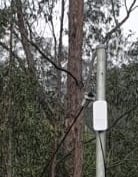 Air Gap 1 Air Gap 1 |
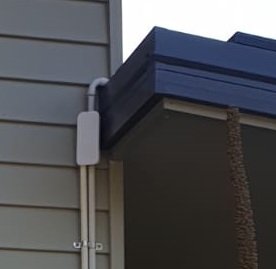 Air Gap 2 Air Gap 2 |
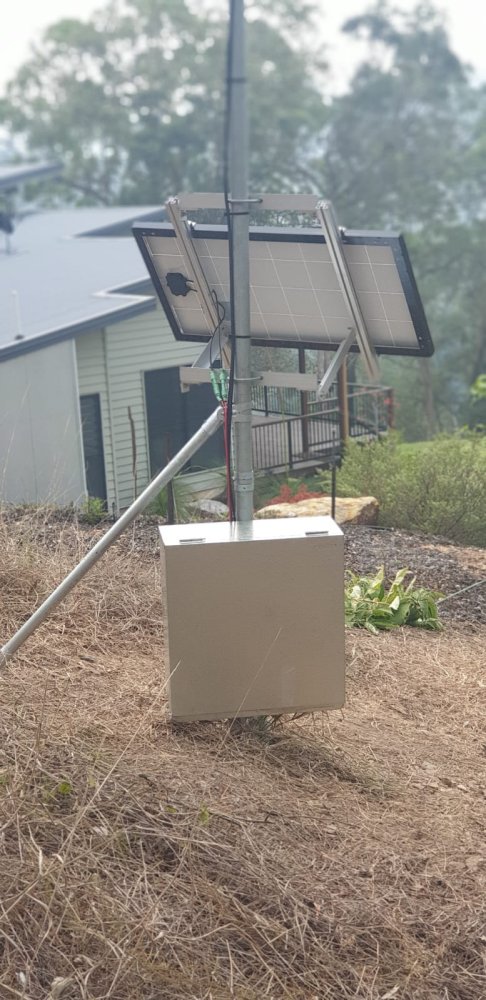 Standalone Solar panel for air-gap Wi-Fi
Standalone Solar panel for air-gap Wi-Fi| ITEM | UNITS | FREQUENCY | OPTIONAL |
|---|---|---|---|
| Air-Gap including hardware and installation at both ends | Per Air-Gap | Once-Off | Yes |
| Optional Solar-Power Hardware if required per end | Per End – Per Air-Gap | Once-Off | Yes |
| Optional Pole including hardware and installation if required | Per Pole | Once-Off | Yes |
2. Elevated Cable Aerial Installation – Fiber cable run on small, low height, metal – 38 mm poles
- In areas where trenching is not possible due to the terrain or where there is no existing fence or the fence is sufficiently damaged or frail, and the landowner does not want to see a fence in place and Aerial cable might be the best fit and has proved to be very effective
- XSTRA will install as many metal poles as is required, at least 3.2 meters high but not higher than 10 meters, to facilitate the installation of the fiber cable. Due to the nature of some terrain, the actual height of the cable from the ground may be higher than 3.2 meters from the ground but not less than 2.7 meters. In areas where the cable goes over a roadway on the Customers property, the height of the cable shall be at least 3.5 meters from the ground. (See s3.16(3) Telecommunications Code of Practice 2018 – states 2.4-meter height requirement however XSTRA shall defer to using the higher height of 2.7 meters as per s19.2 Australian Standard AS/CA S009:2013 )
- Over any residential driveway the cable height will be kept above 3.5 meters as per s19.2 Australian Standard AS/CA S009:2013
- Over any commercial/industrial driveway or private roadway the cable height will be kept above 4.9 meters as per s19.2 Australian Standard AS/CA S009:2013
- The average spacing between poles will be approximately 30 meters or as needed to ensure the minimum height of 2.7 meters is maintained at all times where applicable.
- In addition, pole heights will not exceed 10 meters above the natural ground surface in accordance with the Commonwealth Building Act 1975, the Airport Obstacle Limitation Surfaces Standards of the Civil Aviation Safety and as specified in guidance from the Brisbane City Council (See: https://www.brisbane.qld.gov.au/planning-and-building/do-i-need-approval/residential-projects/structures/installing-an-aerial-antenna-flagpole-mast-or-tower)
- Should a pole need to be attached to a building or structure it shall not be more than 3.5 meters above the building or structure.
- XSTRA will then run an optical, di-electric, non-conducting, fiber cable containing at least 2 glass optical fibres along the proposed aerial pathway
- Maximum speeds for this type of installation will be:
- 10 Gigabits – (10,000 Megabits Per Second Download)
- 10 Gigabits – (10,000 Megabits Per Second Upload)
| ITEM | UNITS | FREQUENCY | OPTIONAL |
|---|---|---|---|
| Aerial Installation per meter including fiber cable, hardware, and installation | Per Meter | Once-Off | Yes |
| PARTS MANIFEST |
|---|
| 3200mm poles (good for 30m+ spacings) |
| standard mega anchors |
3. Underground Installation – Fiber cable installed inside a protective compliant conduit in a trench underground
- In open areas accessible for small to mid-scale mechanical trenching equipment, where the length of trench is proposed to be at least 50m in length, XSTRA will dig a trench 300 millimetres deep where required in soft soil.
- Extremely rocky ground may mean we will not be able to reach a depth of 300 millimetres and in these circumstances, the depth may vary and a strip of fine aggregate concrete may need to be laid over the trench to protect and contain the conduit and fiber.
- Into this trench XSTRA will install white communications 20 mm compliant conduit pipes from the FAT to the TB
- XSTRA will then run an optical, non-conducting, fiber cable containing at least 2 glass optical fibers, inside the conduit
- XSTRA will minimize damage and use best practice installation methods
- It is possible that some boring works will be required to get under pathways etc. Boring works will need to be costed. If boring works are required then it is possible that additional survey works and other costs could be needed to determine the location of gas, water, sewage, power, etc as well as any works to get under driveways and paths, etc and Dial Before You Dig queries. See https://www.1100.com.au
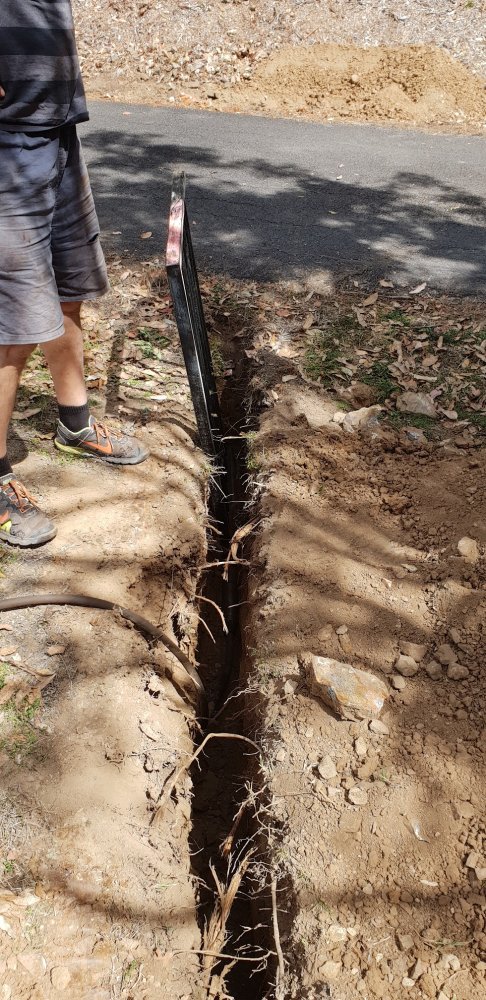 Under road boring works Under road boring works |
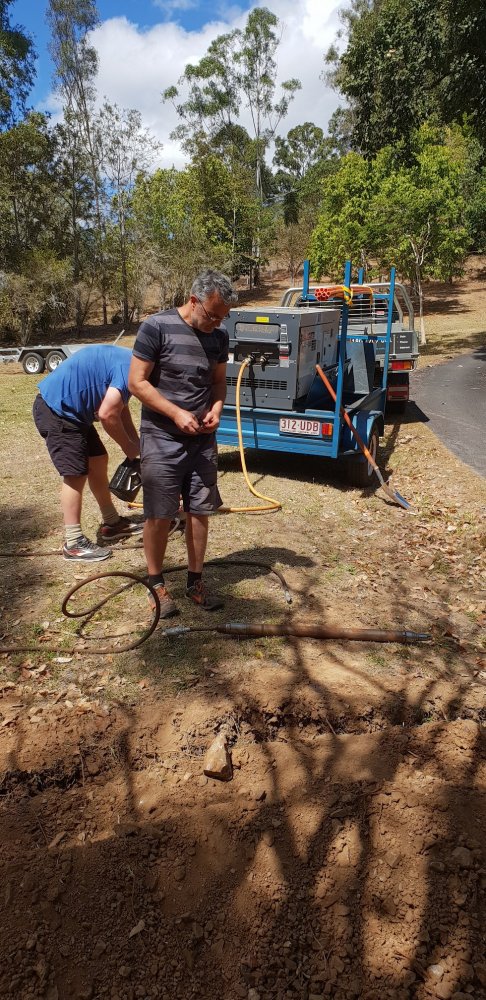 Compressor and underground boring mole Compressor and underground boring mole |
- XSTRA best efforts can not guarantee that damage would not be made to services and the Customer must sign a waiver for costs against XSTRA for any damages and subsequent repairs
- See s3.18 – Telecommunications Code of Practice 2018
- See Section 18.6.2 (d) (ii) in Australian Standards AS/CA S009:2013
| Underground customer cabling in a location other than a public footway or roadway shall be installed to a minimum depth of 300 mm, measured from the finished ground/pavement surface to the top of the cable or conduit, unless the soil conditions preclude depth of 300 mm, e.g. solid rock or shale, in which case the cabling may be installed in accordance with one of the following methods: a) Installation of the cable or conduit at any depth under a covering of at least 50 mm of fine aggregate concrete. b) Installation of the cable in compliant medium-duty metallic conduit chased into, or secured to the surface of, the ground and installed in such a way so as not to be hazardous to pedestrians. c) Installation of the cable in compliant conduit installed above the surface of the ground and secured against a fixed vertical structure such as a retaining wall or fence. |
- Maximum speeds for this type of installation will be:
- 10 Gigabits – (10,000 Megabits Per Second Download)
- 10 Gigabits – (10,000 Megabits Per Second Upload)
| ITEM | UNITS | FREQUENCY | OPTIONAL |
|---|---|---|---|
| Underground Trench installation per meter including fiber cable, hardware, and installation in soft soil | Per Meter | Once-Off | Yes |
| Underground Trench installation per meter including fiber cable, hardware, and installation in rocky or similar soil | Per Meter | Once-Off | Yes |
| Boring works | As Req’d. | Once-Off | Yes |
| Survey Costs like Dial Before Dig and other costs possible | As Req’d. | Once-Off | Yes |
4. Traditional Star-Picket Wire Fencing
- Where soil conditions preclude underground cablings such as solid rock or shale and if no fence exists then an alternative to the Aerial Installation (mentioned in 2. above) could be a traditional star picket fence. The fence will have 2 rungs of wire cable installed with compliant conduit attached to the lower rung using UV rated ties, clips or fixing and the fiber cable fed through the conduit with access points into the conduit spread out no more than 50 meters apart.
- XSTRA will install steel pickets of approx. 1.7 meters high with approx. 7-meter spacing or as required.
- XSTRA will then create a fence by installing 2 standard fencing wires between all pickets with tension.
| ITEM | UNITS | FREQUENCY | OPTIONAL |
|---|---|---|---|
| Traditional Star-Picket Wire Fencing installation per meter including fiber cable, conduit, hardware, and installation | Per Meter | Once-Off | Yes |
5. Existing Fence Installation
- Where soil conditions preclude underground cabling such as solid rock or shale and an existing fence is in place, compliant conduit will be placed on the fence as high as possible but not on the top-most rung and attached using UV resistant ties, clips or fixings and the fiber cable installed inside the conduit. See Section 18.6.2 (d) (ii) in Australian Standards AS/CA S009:2013
Underground customer cabling in a location other than a public footway or roadway shall be installed to a minimum depth of 300 mm, measured from the finished ground/pavement surface to the top of the cable or conduit, unless the soil conditions preclude depth of 300 mm, e.g. solid rock or shale, in which case the cabling may be installed in accordance with one of the following methods:
a) Installation of the cable or conduit at any depth under a covering of at least 50 mm of fine aggregate concrete.
b) Installation of the cable in compliant medium-duty metallic conduit chased into, or secured to the surface of, the ground and installed in such a way so as not to be hazardous to pedestrians.
c) Installation of the cable in compliant conduit installed above the surface of the ground and secured against a fixed vertical structure such as a retaining wall or fence.
| ITEM | UNITS | FREQUENCY | OPTIONAL |
|---|---|---|---|
| Existing Fence Fiber Cable installation per meter including fiber cable, conduit, hardware, and installation | Per Meter | Once-Off | Yes |
6. Customer Self-Installation
- Some Customers may prefer to arrange to have the fiber cable installed themselves for part of the required installation length where it is solely on their land or property or boundary.
- XSTRA will provide the cable per meter to the customer in these circumstances and the customer is then able to arrange the installation of the cable themselves
- XSTRA will provide instructions in writing to the Customer indicating where the fiber must start and end after consultation with the Customer – Cable Start and End Agreement
- XSTRA recommends that the installation be carried out by a licensed cabler and poles, and/or compliant conduit be used
- Once the fiber is installed, the Customer must contact XSTRA and arrange for XSTRA to terminate the cable ends, install the TB, CPE and optionally a FAT
- Customer assumes all responsibility for compliance of the installation
| ITEM | UNITS | FREQUENCY | OPTIONAL |
|---|---|---|---|
| Fiber Cable per meter for installation to be arranged by Customer | Per Meter | Once-Off | Yes |
7. A combination of all of the above methods to meet the Customers requirements
Risks To Operations Outside of XSTRA’s Control
The biggest clear and apparent risks to the up-time levels for the network are:
| RISK | MITIGATION |
| Falling Trees | Damage to the fiber cables is most likely to be from falling trees. The backbone of the network is built in approx. 500-meter sections with Network Access Points (NAP’s) (junction boxes) linking together each section. If a section of cable suffers damage, another cable section can be installed relatively quickly by-passing the damage until it can be repaired. |
| Vandalism of network | All NAP’s (Junction Boxes) and Comms rooms are to be padlocked at all times when not undergoing maintenance. Security cameras where suitable. |
| Extreme Weather | Ensure N+1 spare parts and redundancy where possible. |
| Fire | Fire is a major hazard and there is little to protect the fiber cable from long exposure to the extreme heat that would be present in a typical bush fire. After 2019 all-new cables used on the project will conform to British Standard BS 6387 which should mitigate the risk of damage from regular hazard reduction burning and all types of bush fires. |
Labelling
Customers must not open any enclosures in our network. Doing so could expose the Customer to eye damage from laser light sources or abrasion injury from fiber ends and other materials. Inside enclosures, XSTRA will install warning labels that will be durable, permanently affixed, legible, and clearly visible during operation, maintenance, and service, according to their purpose. XSTRA may also install labels on the outside of enclosures and we recommend this. Labels shall be so positioned that they can be read without the necessity for human exposure to laser radiation. If you should find a damaged cable or damage of any kind to any telecommunications equipment related to XSTRA, do not attempt to repair it yourself, and please call 1300 555 920 immediately.
 Optical fiber warning label
Optical fiber warning labelSuggested text for future labels would be as follows – See Section 11.1.6.5 in Australian Standards AS/CA S009:2013
CAUTION HAZARD
FEDERAL INFRASTRUCTURE – TELECOMMUNICATIONS ACT 1997
DO NOT DAMAGE OR INTERFERE WITH THIS INFRASTRUCTURE
POTENTIAL VISIBLE AND INVISIBLE LASER RADIATION MAY BE PRESENT
DO NOT STARE INTO THE BEAM OR VIEW DIRECTLY WITH NON-ATTENUATING OPTICAL INSTRUMENT
CONTACT PHONE NUMBER: 1300 555 920
Availability
Only available in selected locations where XSTRA has installed or is planning to install high-speed optical fiber. Please contact your XSTRA Relationship Architect or Business Development Manager to discuss your connectivity options. Please call 1300 555 920.
Internet Speed Disclaimer
XSTRA provides residential and commercial customers with a variety of high-speed Internet plans from which to choose. XSTRA provisions its customers’ connection using fiber or wireless, and engineers its network to ensure that its customers can enjoy the speeds to which they subscribe. However, XSTRA does not guarantee that a customer will actually achieve those speeds at all times. Without purchasing an expensive, dedicated Internet connection, no Internet Service Provider (“ISP”) can guarantee a particular speed at all times to a customer. XSTRA advertises its speeds as a maximum speed level based on the tier of service to which a customer subscribes.
Speed Variations
The “actual” speed that a customer will experience while using the Internet depends upon a variety of conditions, many of which are beyond the control of an ISP such as XSTRA. These conditions include:
- Performance of a customer’s computer, including its age, processing capability, its operating system, the number of applications running simultaneously, and the presence of any adware and viruses.
- Type of connection between a customer’s computer and our equipment. For example, wireless connections are always slower than direct connections into a router or switch. Wireless connections also may be subject to greater fluctuations, interference, and congestion. XSTRA does not recommend wireless connections for any situations where stability and speed are critical or for use with our higher speed tiers as many wireless connections do not perform at the speeds delivered by these tiers. XSTRA will not consider any speed tests undertaken from any customer wireless devices as accurate.
- The distance packets travel (round trip time of packets) between a customer’s computer and its final destination on the Internet, including the number and quality of the networks of various operators in the transmission path. The Internet is a “network of networks.” A customer’s connection may traverse the networks of multiple providers before reaching its destination, and the limitations of those networks will most likely affect the overall speed of that Internet connection.
- Congestion or high usage levels at the website or destination. If a large number of visitors are accessing a site or particular destination at the same time, your connection will be affected if the site or destination does not have sufficient capacity to serve all of the visitors efficiently.
- Gating of speeds or access by the website or destination. In order to control traffic or performance, many websites limit the speeds at which a visitor can download from their site. Those limitations will carry through to a customer’s connection.
- The performance of the cable modem you have installed. Modem performance may degrade over time, and certain modems are not capable of handling higher speeds.
- This is the reason that XSTRA, like all other ISPs, advertises speeds at a set level, and does not guarantee them.
Speed and Latency test on XNET Brookfield
Latency
Latency is another measurement of Internet performance. Latency is the time delay in transmitting or receiving packets on a network. Latency is primarily a function of the distance between two points of transmission but also can be affected by the quality of the network or networks used in transmission. Latency is typically measured in milliseconds, and generally has no significant impact on typical everyday Internet usage. As latency varies based on any number of factors, most importantly the distance between a customer’s computer and the ultimate Internet destination (as well as the number and variety of networks your packets cross), it is not possible to provide customers with a single figure that will define latency as part of user experience.
Installation Access Guidelines and “Land Access and Activity Notices” (LAAN’s)
XSTRA is often required to enter onto private land to assist Customers or perform actions to develop our network. XSTRA is conscious of the need to show respect to all landowners at all times. It means all of our team members are trained to act with integrity and consideration in all dealing with the public and landowners. This means for example:
- Plan ahead so that time on a landowner’s property is minimized. Ensure all tools and equipment are taken to the property in the first visit to avoid repeat entry events
- driving slowly on landowners property at all times
- avoid taking vehicles into inappropriate spaces such as steep ascents or any location which could pose an unacceptable risk to the vehicle or others on the property
- keeping noise levels low
- not leaving items around
- show care towards the property of others at all times
- No current LAAN with a landowner = no access to that owner’s land
- It is up to XSTRA to ensure all LAAN’s are served correctly on landowners. XSTRA may set large time frame windows to ensure XSTRA is covered and XSTRA will let the landowners know in writing on the LAAN’s that the window is large to allow for any time over-runs
- LAAN’s may contain any additional and applicable explanatory documentation from the TIO or ACMA to support our activities
- XSTRA will endeavour to ensure all other general and/or special agreements and/or agreements with landowners brought about in passing, are in writing of some type even if it starts out as a verbal agreement. XSTRA is likely to send an email to a landowner in these circumstances confirming any details and if there is no reply to the contrary, XSTRA may take this as approval.
- Any change to anything on any landowner’s property needs to be approved by the landowner unless it was mentioned on the LAAN.
- XSTRA may take pictures of anything and any place before we do work as a record of before and after
- Where a LAAN cannot be delivered by hand to the owners letterbox, LAAN’s are to be sent “Registered Mail”
- Copies or samples of LAAN’s given to individual landowners should be held by XSTRA for 24 months
“LAAN – Notice Period Waiver” for Customers
Many utilities companies have land access rights to your property. As an example, the gas meter person will enter your property to check your meter readings. Water, Telecoms, and Electricity utility companies perform similar actions, often on a regular basis. Likewise, when the Customer orders a service from XSTRA they are agreeing to waive the normal notice period for access to their property for XSTRA staff and authorized contractors who may need access to the Customers property from time to time while the Customer has a service or equipment from XSTRA. Without prejudice to XSTRA’s rights under Schedule 3 of the Telecommunications Act 1997, to the extent that XSTRA undertakes maintenance (as that term is defined under Schedule 3 of the Act), the Owner agrees that it does not require XSTRA to give notice of that activity under Schedule 3 of the Act. However, in most cases, XSTRA will provide the Customer with at least 24 hours notice in writing, email or by phone if it is practical to do so. This waiver is immediately null and void if the Customer has no services or Equipment from XSTRA. The Telecommunications Act 1997 can be found on the Federal Register of Legislation website found here: https://www.legislation.gov.au
Safety
XSTRA has complied with the applicable standards related to this proof of concept project in Brookfield. Namely :
- AS/CA S009:2013
- AS/CA S008:2010
- AS/NZS IEC 60825.2:2011
- AS/NZS 60825.1
- AS/NZS 60825.2
- C628:2019 – Telecommunications Consumer Protection Code
- The fiber cable used on the project complies with AS/CA S008:2010 for UV resistance and water penetration. In future, the fiber cable used for the main lines will comply to British Standard BS 6387 at yet to be determined Categories
- The project has a current SWMS to cover High-Risk Construction Work (HRCW) works – Brookfield Project SWMS
- The project has no formal requirement on contractors and employees to complete Job Safety Analysis (JSA) documents daily however this will be a recommendation should the project move from a proof of concept to a commercial project
- The head of the project Danny Vincent holds all required certifications to undertake the project works including current qualifications in:
- First Aid & CPR Certifications
- Open Cabling Certification
- Optical Fiber Certification
- Cabler Certification
- Structured Cabling Certification
- Climbing at Heights and Tower Rescue Certifications
- Member of Titab Australia – https://www.titab.com.au
XVOICE Home Phone Bundle – In Australia Only
The Customer can elect to add any number of phone line services to their order. These services include unlimited calls to all Australian numbers plus some international destinations. XSTRA is also available to “Port” your existing number across to your XNET service for a fee. These services will be provided to the customer using a small device called a “Phone Gateway”. The Phone Gateway has 2 ports, a normal RJ11 telephone socket, and a standard Ethernet Cat5 network port. The Customer can connect this device to their home network and connect a standard phone, allowing them to make and receive phone calls. Once you have a working phone service with XSTRA it will be possible for the Customer to cancel their old phone copper services with Telstra, Optus or whoever is handling their phone line services currently.
Satisfaction Guarantee
At XSTRA’s discretion, should the Customer have a problem with their service that has not been resolved within 45 days, XSTRA may allow the Customer to cancel their service without requiring the minimum notice period to cancel.
Billing Method
Billing for your services, products, and equipment will be included in an electronically delivered invoice to your nominated email address. Recurring services, products, and equipment shall be billed monthly in advance.
Payment Method
Payment of invoices shall be made via XSTRA’s nominated Direct Debit facility. For more information see XSTRA’s Credit Policy
Re-Connection Charge
If a service is suspended due to non-payment, a reconnection fee will apply equally to 1 month’s value of the service, providing the original installation works and integrity thereof are in place and operational, otherwise additional fees and charges will be charged to the Customer at XSTRA’s discretion. All re-connection costs must be paid before the service is reinstated.
Service Plan Change Charge
If the Customer wishes to make a change to their service plan they may do so with the change coming into effect at the start of the next invoice for the relevant service period. For all other Minimum Contract Period obligations and proposed plan changes, please refer to XSTRA’s Global General Terms and Conditions of Trade Agreement.
Customer’s Legal Obligations
The Customer must obtain, always read and agree to be bound by the contents of the following 3 documents below:
- before planning to order the service
- during the use of the service, and
- where applicable, after the service has been deactivated, suspended or cancelled
The documents referred to are: - Global General Terms & Conditions of Trade Agreement
- XNET Rural Fiber – Critical Information Summary
- XNET Acceptable Use Policy
All of these documents can be obtained through the following channels:
- https://x.direct
- By calling any of the relevant numbers shown in our publicly available on our Global Contact Information page
- By contacting your Customer Relationship Architect or Business Development Manager
Support
Phone Support: 24 × 7 Phone Support – Please call any of the relevant numbers shown in our publicly available Global Contact Information page
Email : support@x.direct
If an onsite visit is required and the fault is found to be on the Customers side of the CPE then all costs to restore the service using Equipment, Products, and Services from Schedule 1 will be charged to the Customer.
If an on-site visit is required and the fault is found on XSTRA’s side of the CPE and XSTRA deem the fault to be as a result of intentional actions by persons other than XSTRA’s employees or representatives and not of natural causes or normal wear and tear, then all costs to restore the service using Equipment, Products and Services from Schedule 1 will be charged to the Customer.
Complaints or Disputes
If you need to make a complaint please:
- Call your Relationship Architect or Business Development Manager or
- Call any of the relevant numbers shown in our publicly available at the Global Contact Information page
- You may also email your complaint to support@x.direct
For Australian Customers Only
If we can’t resolve your complaint to your satisfaction, you may wish to contact the Telecommunications Industry Ombudsman, an independent dispute resolution body by
- Calling 1800 062 058; or
- Emailing to tio@tio.com.au; or
- Faxing to 1800 630 614; or
- By post to PO Box 276, Collins Street West, VIC 8007
- https://commcom.com.au/the-tcp-code/ details
- BS-6387 for Fire Resistance of Cable
- Circuit (insulation) Integrity in accordance with BS 6387:1994
BS 6387:1994 specifies the requirements for cables required to maintain circuit integrity under fire conditions. This is the first standard to include also mechanical stress and water stress in the fire resistance test of electric cables. BS 6387 standard is still used in many countries. Being different from EN 50200, Its limits is to require three different tests on three different cable samples.
The fire-resistant cables are categorized by a letter symbol (e.g. A) or series of symbols (e.g. CWZ) according to the requirements for fire resistance characteristics which they meet, the test temperature selected and the duration of the test for resistance to fire alone in according to BS 6387 as below:
The test provides the basis for the following categories:Test category
( 1 ) Resistance to fire alone
650°C for 3 hours A
750°C for 3 hours B
950°C for 3 hours C
950°C for 20 minutes (short duration) S
( 2 ) Resistance to fire with water Exposed to fire650°C for 15 mins then exposed to fire650°C with water for another 15 mins. W
( 3 ) Resistance to fire with mechanical shock
Exposed to fire650°C for 15 mins then exposed to fire650°C with X
mechanical shock for 15 mins.
Exposed to fire750°C for 15 mins then exposed to fire750°C with Y
mechanical shock for 15 mins.
Exposed to fire950°C for 15 mins then exposed to fire950°C with Z
mechanical shock for 15 minsThe most common test comprises the three categories C, W, and Z.
–Category C is a fire resistance test in which the cable is exposed to a fire at a temperature of
950°C with a duration of 3 hours. under realistic conditions.
– Category W is a fire and water resistance test in which the cable is exposed to a fire at a temperature of 650°C and then for another 15 minutes to fire with water that is poured over the area around the cable. This simulates the effect of the water from a sprinkler that is activated during the fire. -Category Z is a fire and mechanical stroke test in which the cable is installed in a defined manner on a vertical wall with three cable clips and subject to heat from a gas burner; the mechanical shock is simulated by striking the cable with a hammer. The cable is exposed to a fire at a temperature of 950°C and then for another 15 minutes to fire with mechanical shock at a frequency of 2 strikes per minute.
During testing in all three categories, the cable is connected to a 400V three-phase power supply
protected with a 3 A fuse on each phase. The test is regarded as successful if none of the fuses blow
during the test period.Here is the link to the source for the information above.
A simple search engine search will find plenty of other links to similar information.


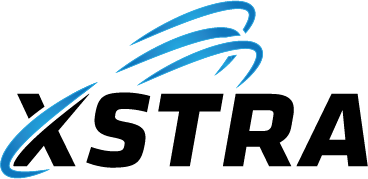

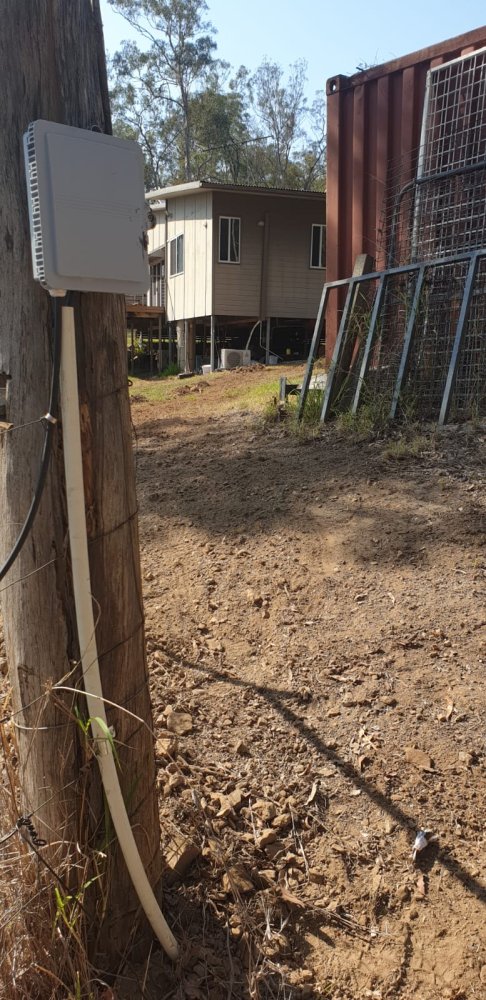
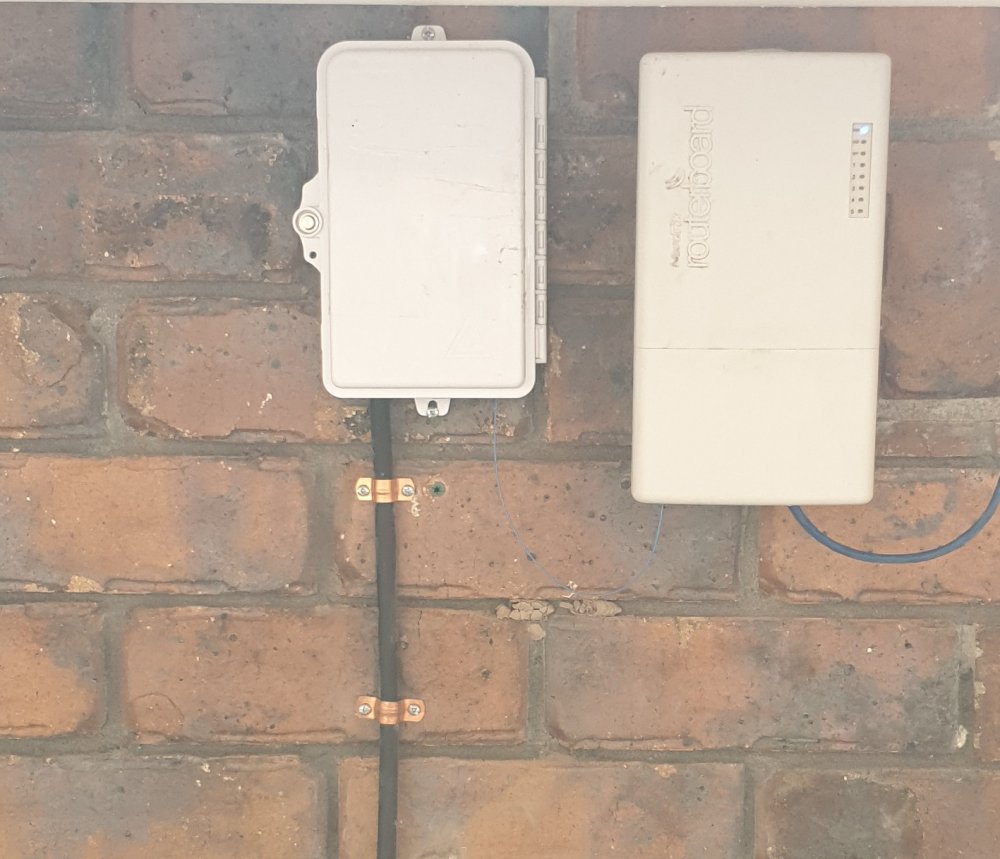
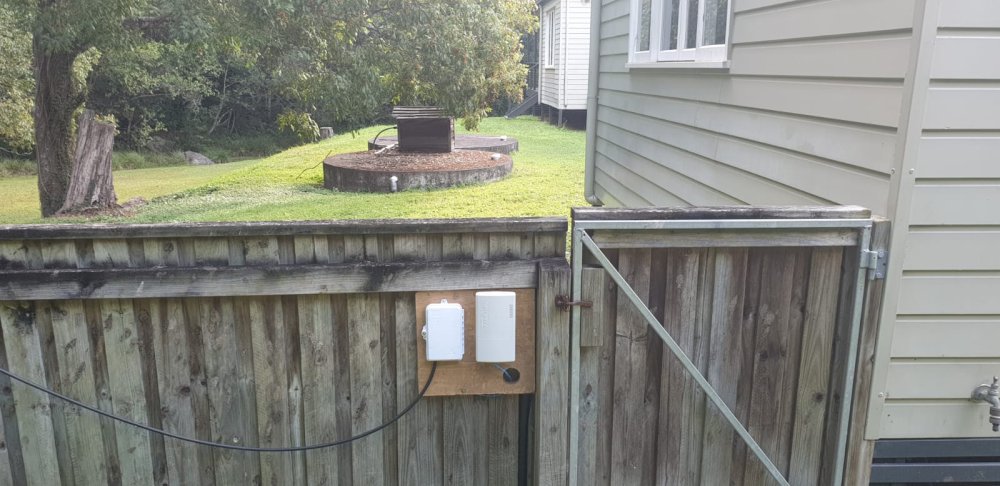


Post your comment on this topic.